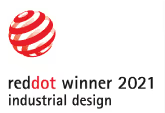Competitive advantage found in SolidWorks for industrial design
Many industrial design firms working in product development rely on surface modeling to express their creative vision for a product in development. Surface modelers such as Rhino, 3D Studio Max, and Alias StudioTools all have a high degree of usefulness in building complex surfaces.
Designers are attracted to these packages because they have an expressive workflow that enables creative output that is free of constraints. A great example of this type of application is in the auto industry, where particular attention to complex, multi-dimensional surfaces is essential to a successfully designed product. While these 3D CAD modeling packages optimize surface quality, they tend to lack the dimensional stability needed to design engineered parts to be used at the manufacturing stage. Surface models have their own limitations—they basically represent sheets of paper, constructing origami-esque geometry to define shapes.
Manufacturers and engineers around the world, however, rely on parametric modeling to build their design solutions. Unlike Surface modeling, which is relatively free of geometrical and physical parameters, parametric modeling allows designers to create objects and assemblies whose digital properties mimic physical ones. Where surfaces are like sheets of paper, solids are more like blocks of material. These blocks behave like the material the designer selects for the product. Solids thus take on the shape and form of materials like stainless steel, aluminum, or injection-molded plastic.
Since these digital objects have real-world properties, they can also simulate real-world applications of physics, such as force, liquid flow, heat, and many others to determine if parts or systems will break, melt, or explode all before an actual prototype is ever produced. Because of this, parametric modelers bridge the gap between development and manufacture - they allow designers to model solution with a viable end product in mind.
There are many parametric modeling platforms in the marketplace, such as CATIA, Autodesk Inventor, and ProEngineer, but by far the most widely used and accepted in the world of product development is French firm Dassault Systemes' SolidWorks. Used by more than 1.3 million engineers in more than 130,000 firms worldwide, SolidWorks is the Rosetta Stone of product development, allowing developers and manufacturers from all over the world to communicate effectively through the process of bringing a solution to fruition.
The Trig crew continues to choose SolidWorks as our primary modeling software platform. So, why do we choose SolidWorks over other parametric modeling tools? We have a few reasons, actually. First, SolidWorks is used by more product developers, engineers, and manufacturers than any other parametric modeling platform in the world. If the object here is for us to be meeting our partners in the engineering community in a workable dynamic, why not choose the framework within which most of them work?
Second, SolidWorks powerful parametric modeling engine makes it possible to create physically accurate components and functional working assemblies. It has a unique timeline-based interface that allows dimensions and configurations to be altered at any point in the modeling process. Hole too large? Gap too narrow? These changes can be altered quickly without affecting other attributes of the model.
Perhaps most critically, SolidWorks simulates real-world materials, mechanical movement, and physics-based applications like force, heat, and liquid flow, among many others. The software creates ready-for-manufacture data output, removing complex and costly development phases between design and manufacturing. Obviously, when a firm like Trig is trying to pack as much value as possible into each design project, this is a huge win for our clients.
The Trig crew views our core competency in SolidWorks as one of our strategic competitive advantages during the product development process. By having our team of designers build products within an engineering tool, this allows us to have more control over the design intent behind a concept, instead of relying upon engineers to interpret an aesthetic from a surface modeling solution. When we’re speaking the engineers’ language from the outset, nothing is lost in translation! Thus, there’s no loss in design intent from designer to manufacturer to engineer.
And from a results standpoint, SolidWorks’ output retains the highest level of dimensional stability, and can be converted to vast number of different CAD data file types. Results are ultimately what business is all about, and SolidWorks helps Trig to achieve results that take as many engineering and manufacturing factors into account for a product’s design, ensuring that our products meet the many user demands for functionality, performance, and endurance in our core markets of hardware and tools, home improvement and furniture, and medical devices.
Trig designers take a pragmatic, collaborative approach to their work. To meet this aim, we stay on top of the tools that give us high compatibility with our partners who take the project to its ultimate solution, a finished, ready-for-market products. SolidWorks is therefore the best fit for our culture.




